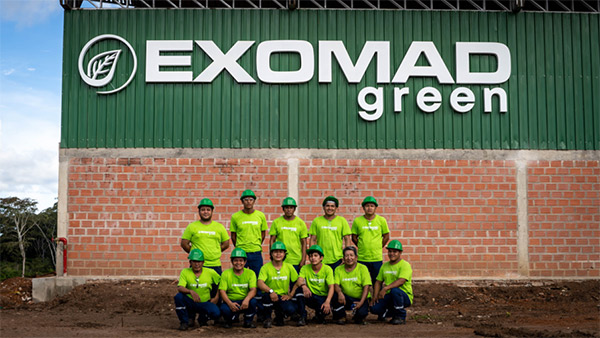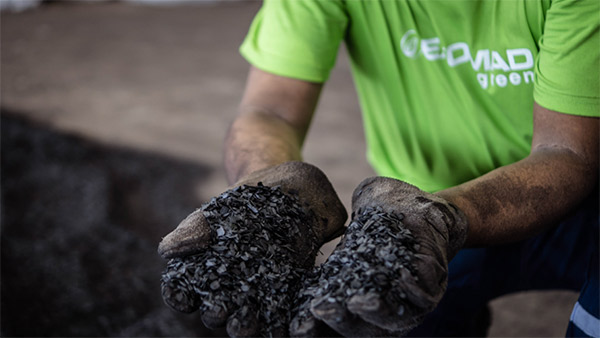- JP
- EN
MOL Becomes first Japanese Shipping Company to Retire Technology-Based CDR Credits
- Contributing to catalyze CDR market to Achieve Net Zero -
May 28, 2025
TOKYO-Mitsui O.S.K. Lines, Ltd. (MOL; President & CEO: Takeshi Hashimoto) announced its participation in the NextGen CDR Facility (Note 1), a collaborative initiative supporting to build a market for credible, scalable carbon removal technologies since 2022. MOL has obtained 2,000 tons of technology-based carbon dioxide removal (CDR) credits (Note 2) from Bolivia's Biochar (Note 3) project led by Exomad Green through NextGen, making it the first Japanese shipping company retirement.


Demand for technology-based CDR credits, designed to remove and storage CO2 over extended periods of time, is expected to rise in the future. However, these credits remain in the early stages of development in terms of both technology and cost, with only a handful of companies in the world purchasing them.
MOL has taken a leading role in procuring these credits, driving market growth by fostering innovation.
While the credits will not directly offset greenhouse gas emissions within the company's value chain, they will play a role in removing CO2 at an entire society (Beyond Value Chain Mitigation).
This project will also contribute to achieving the milestone of "contributing to the removal of a cumulative 2.2 million tons of CO2 by 2030" under the "MOL Group Environmental Vision 2.2," which was established as a roadmap for achieving net zero GHG emissions by 2050 and sustainable development for people, society, and the Earth. Through these milestones, we aim to further ensure that we will be able to neutralize our remaining emissions in the future, as well as to promote the spread and expansion of negative emissions in order to achieve decarbonization throughout society.
(Note 1) For more information on "NextGen," please refer to the April 26, 2023 press release: NextGen establishes world's largest diversified portfolio of permanent carbon dioxide removals to scale the market
(Note 2) Solution to pyrolyze biomass and fix carbon under non-combustion conditions.
(Note 3) "CDR credits" refer to carbon credits derived from processes that actively remove CO2 from the atmosphere. These methods fall into two main categories: "nature-based" and "technology-based." Nature-based solutions encompass practices like afforestation, reforestation, and soil carbon management. On the technological side, methods like DACCS, which captures atmospheric CO2 and storages it underground, and BECCS, which integrates biomass power generation with CCS technology for underground CO2 storage, are prominent. The biochar acquired under the purchase is classified as a technology-based solution.
MOL Group 5 Sustainability Issues
MOL Group identifies "Sustainability Issues" (Materiality) as our key issues for sustainable growth with society through realization of the Group Vision.
We anticipate this initiative to contribute especially to the realization of "Environment -Conservation for Marine and global environment-" and "Innovation -Innovation for development in marine technology-".

